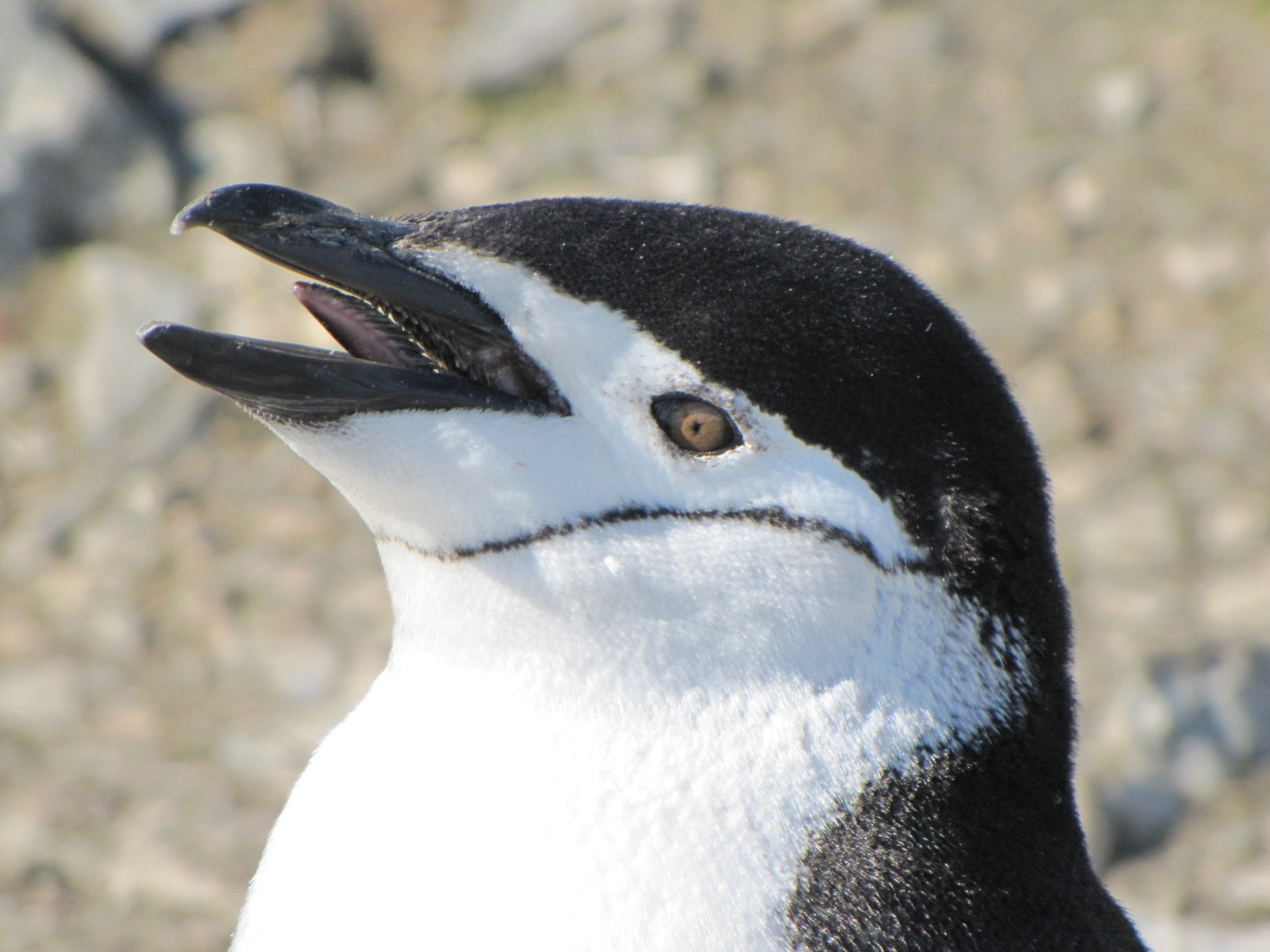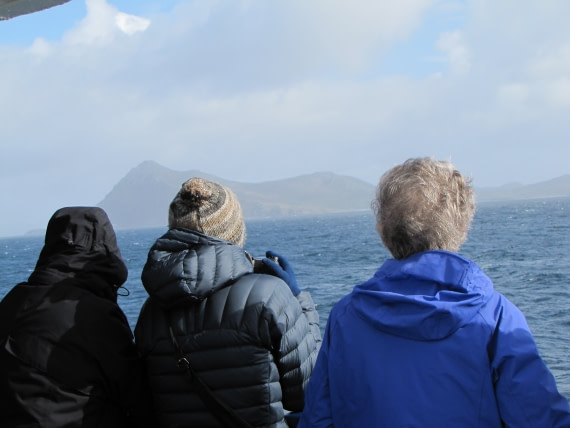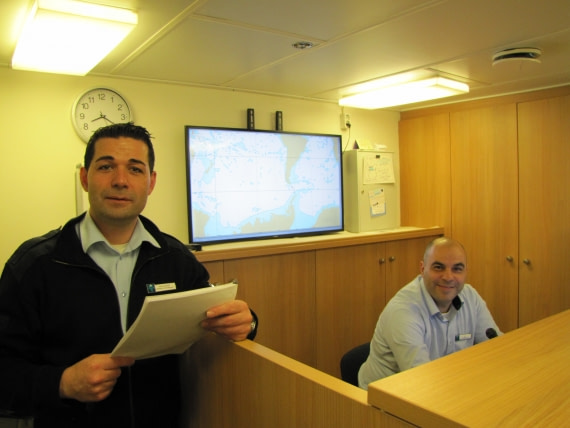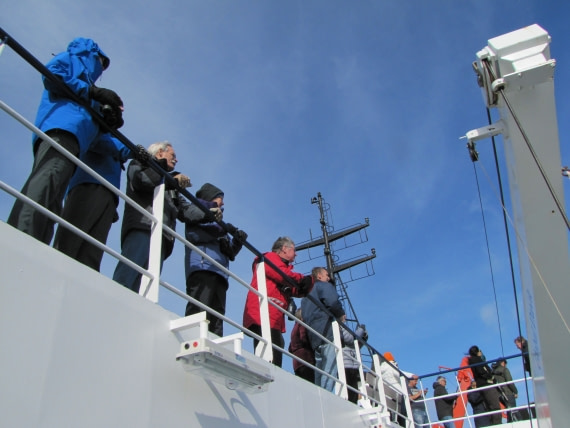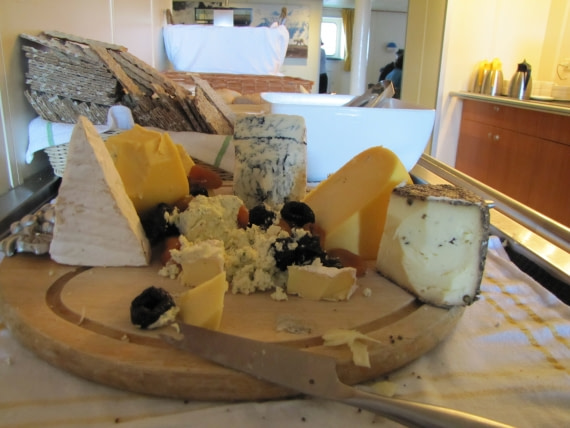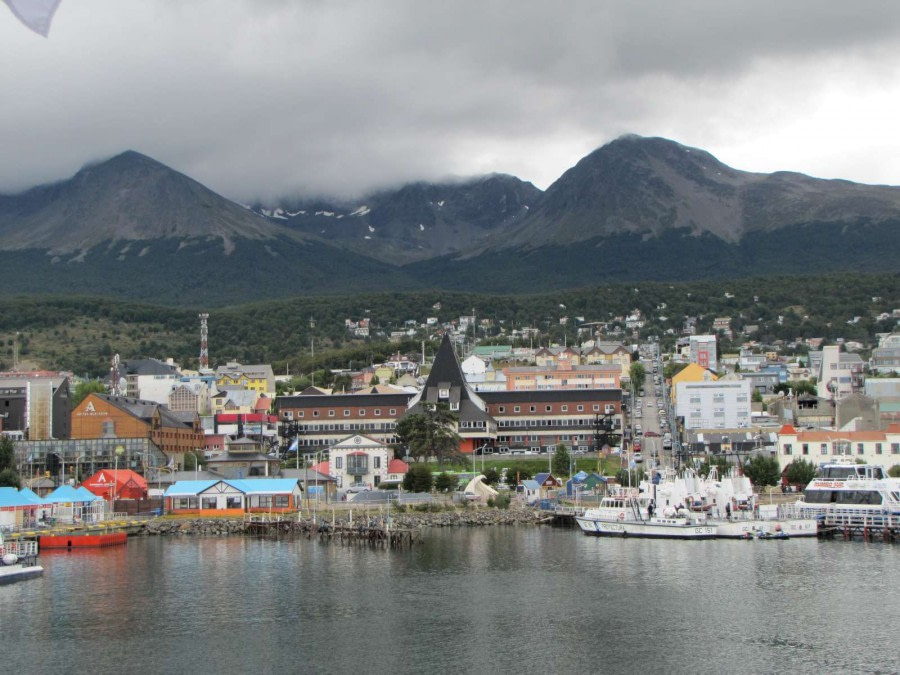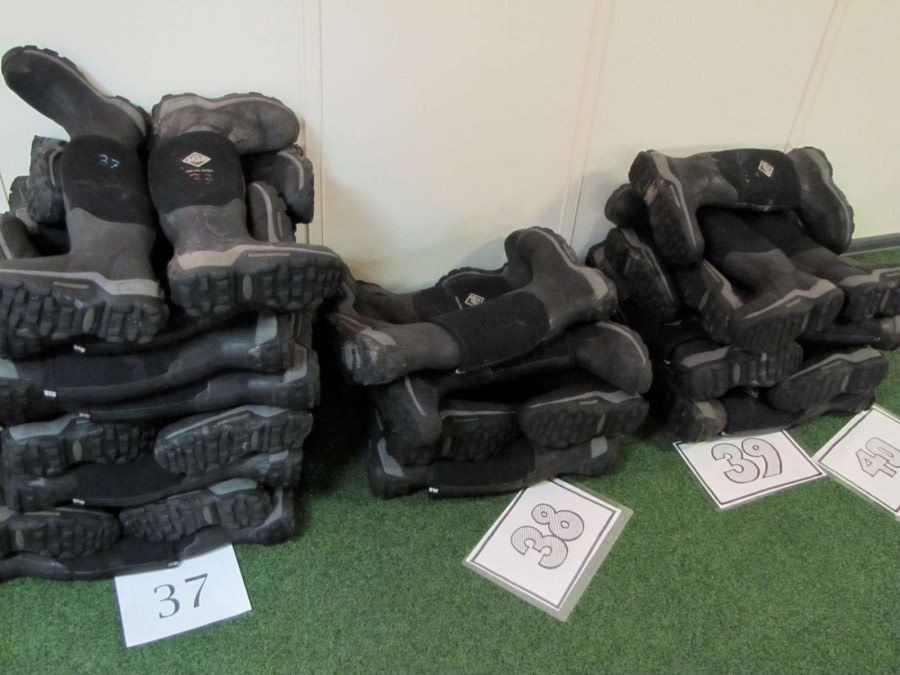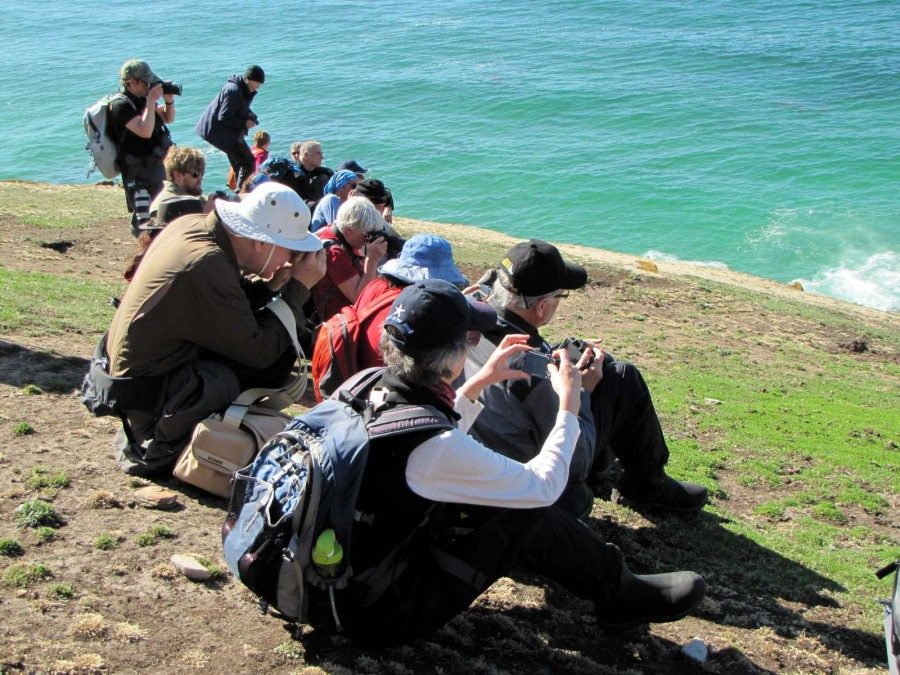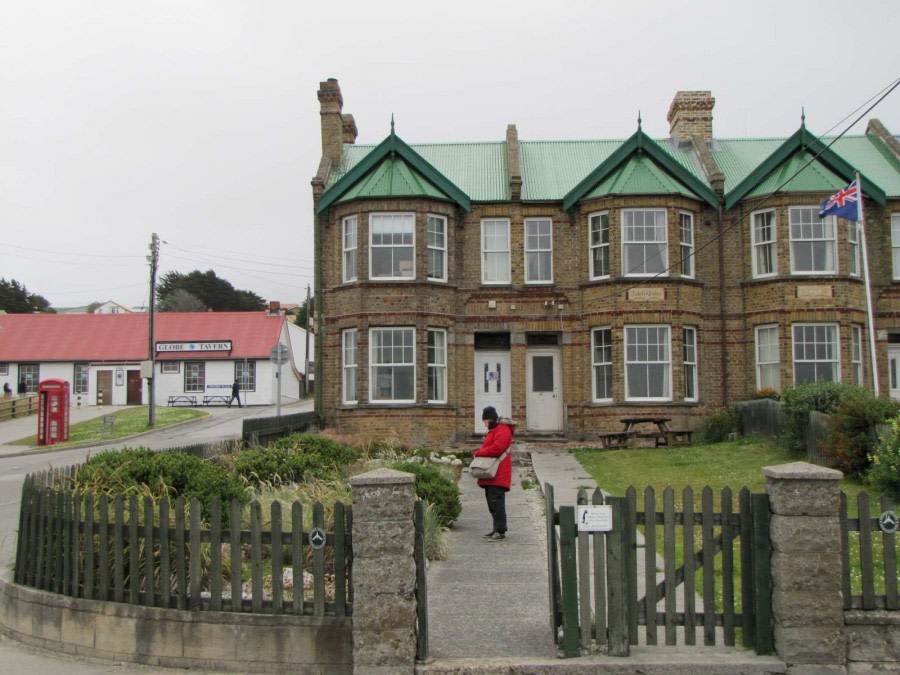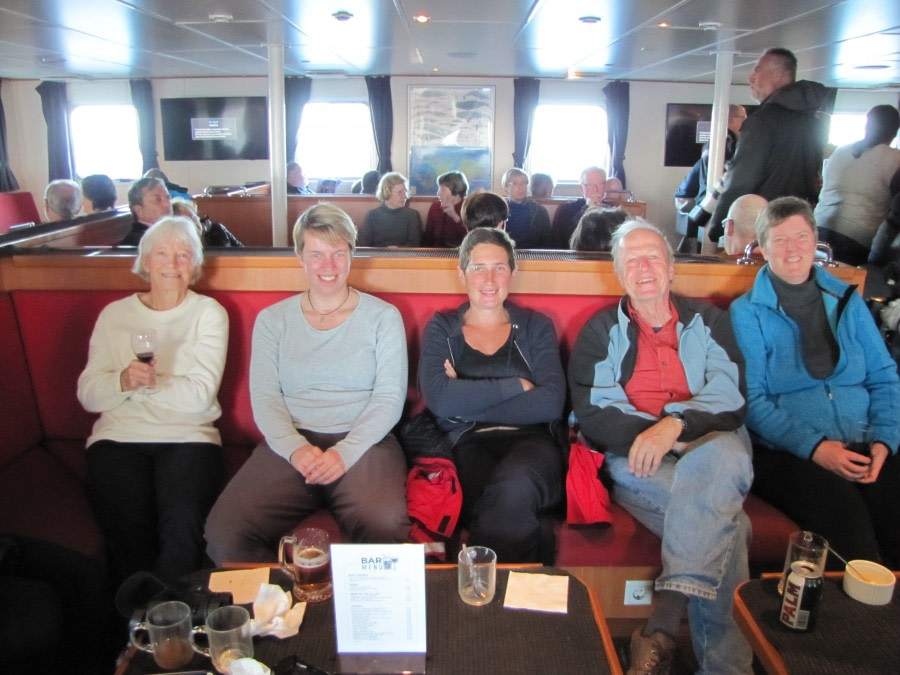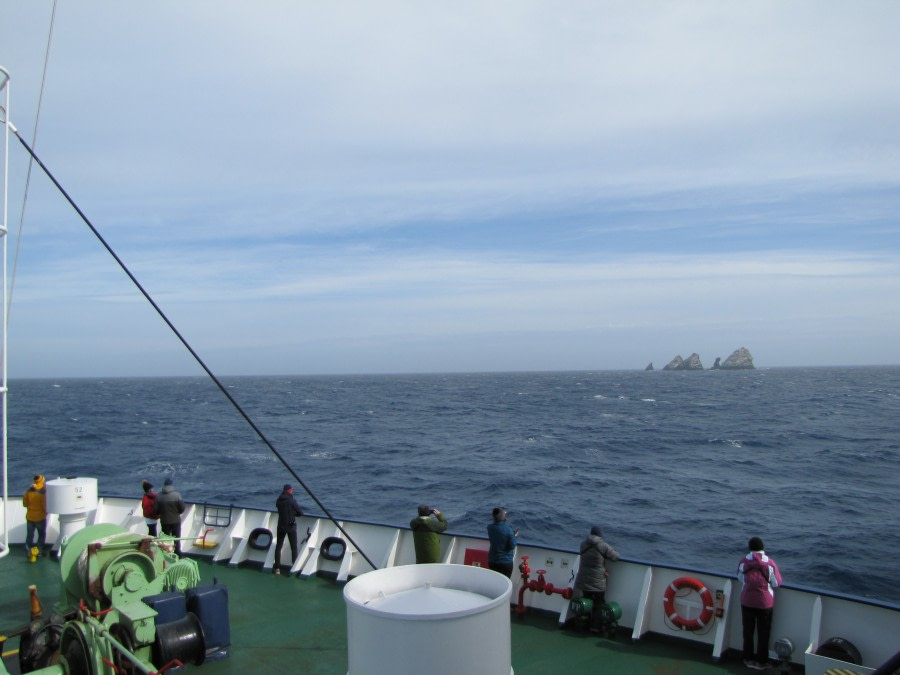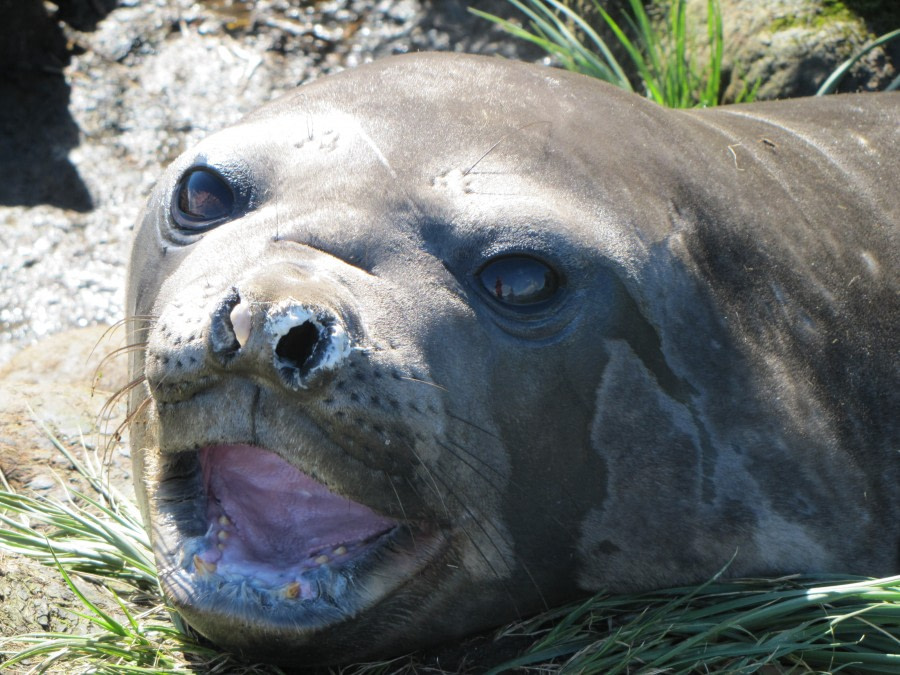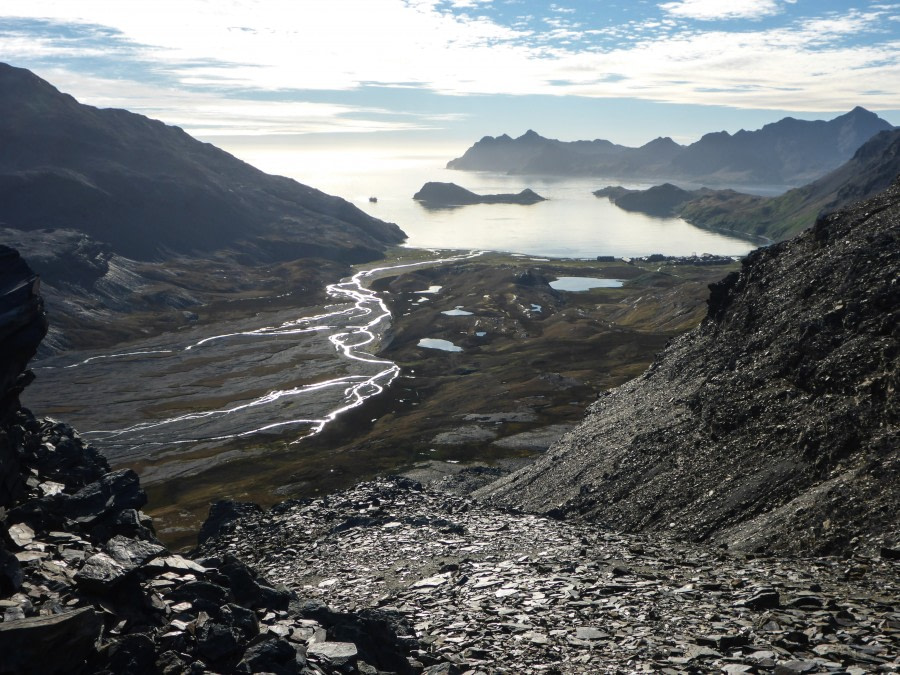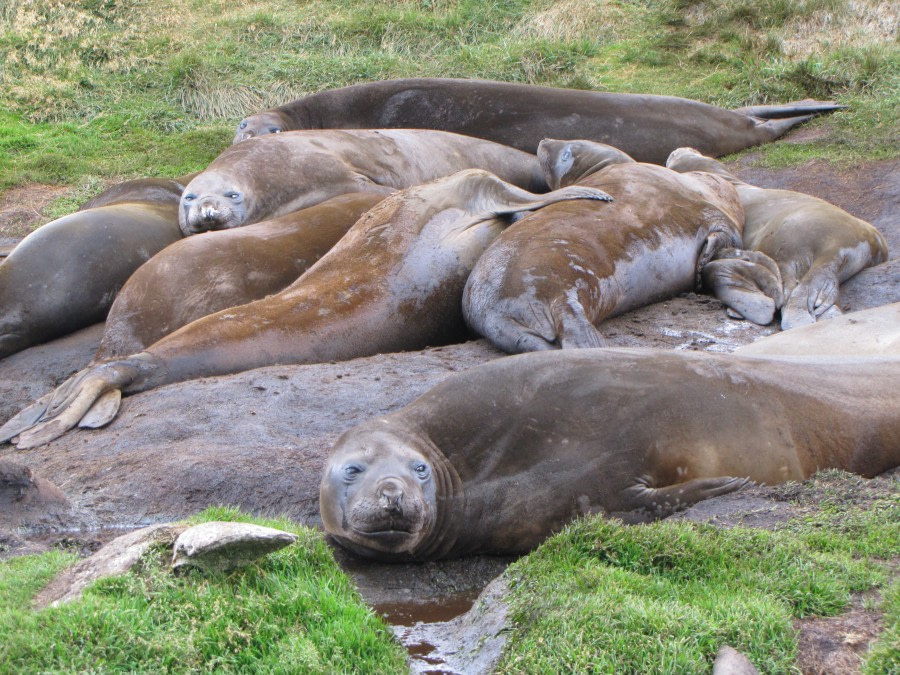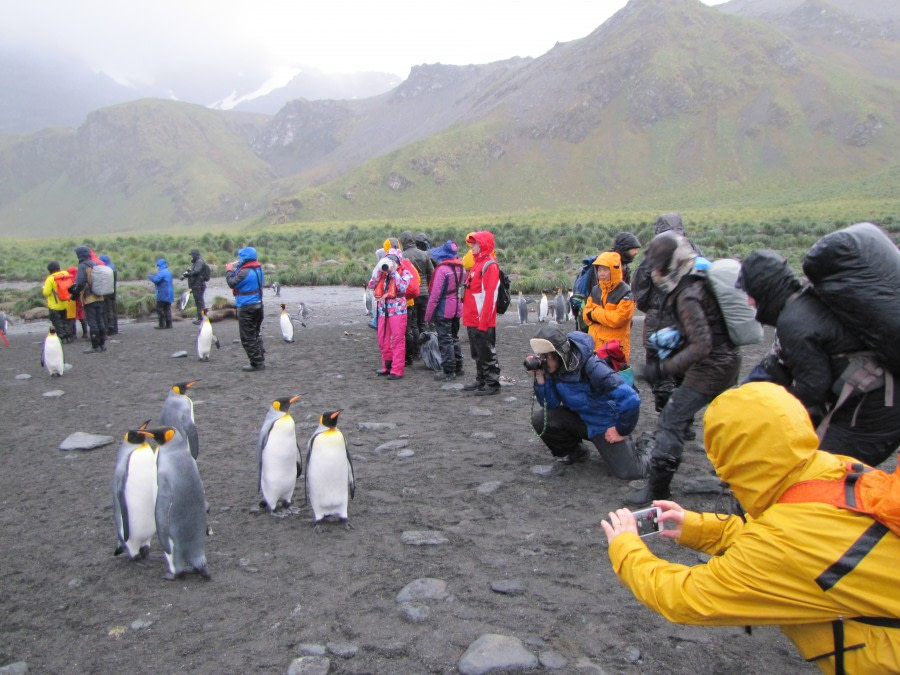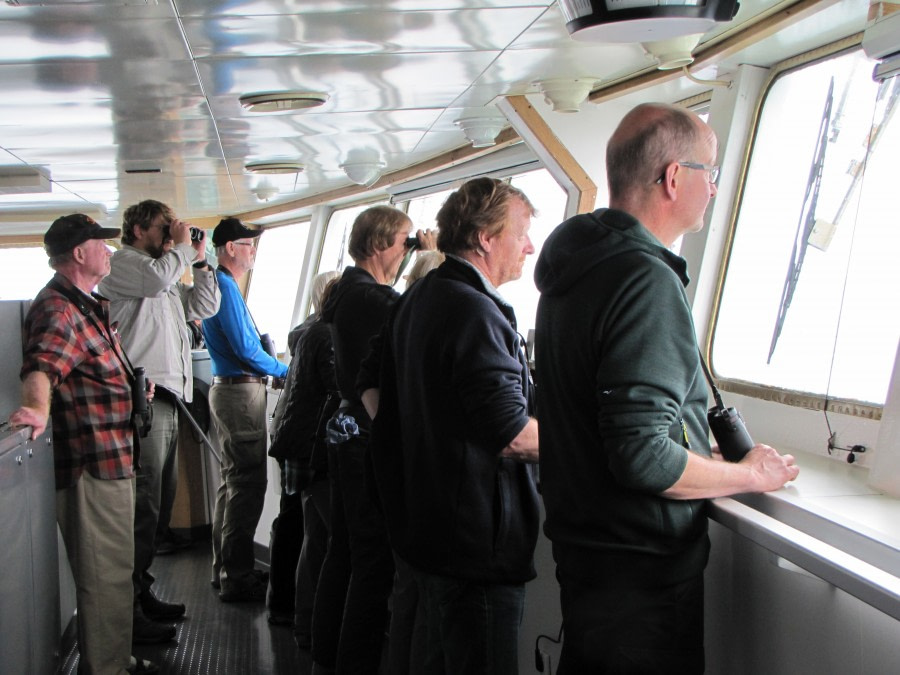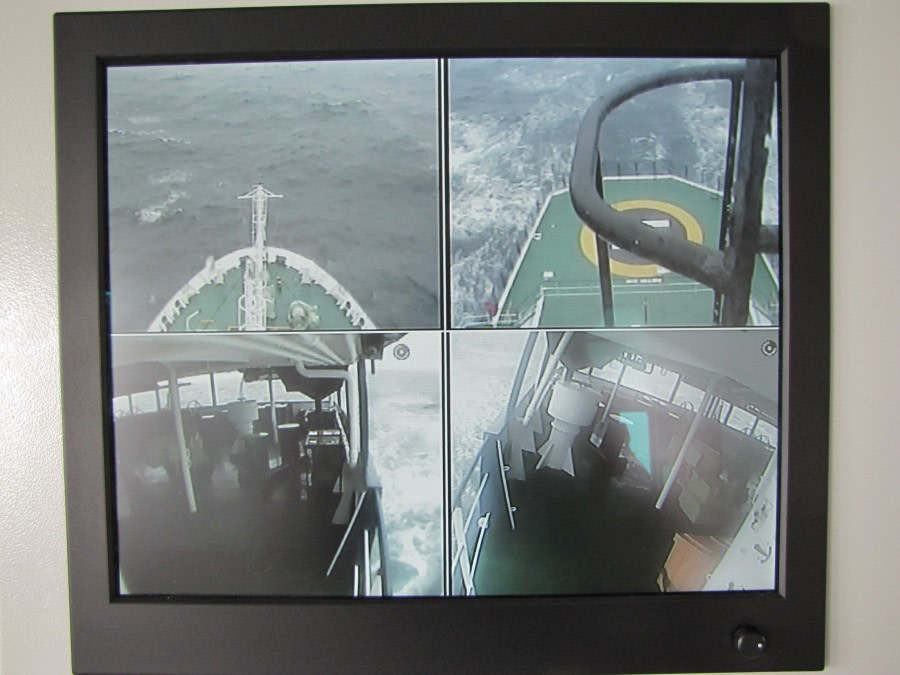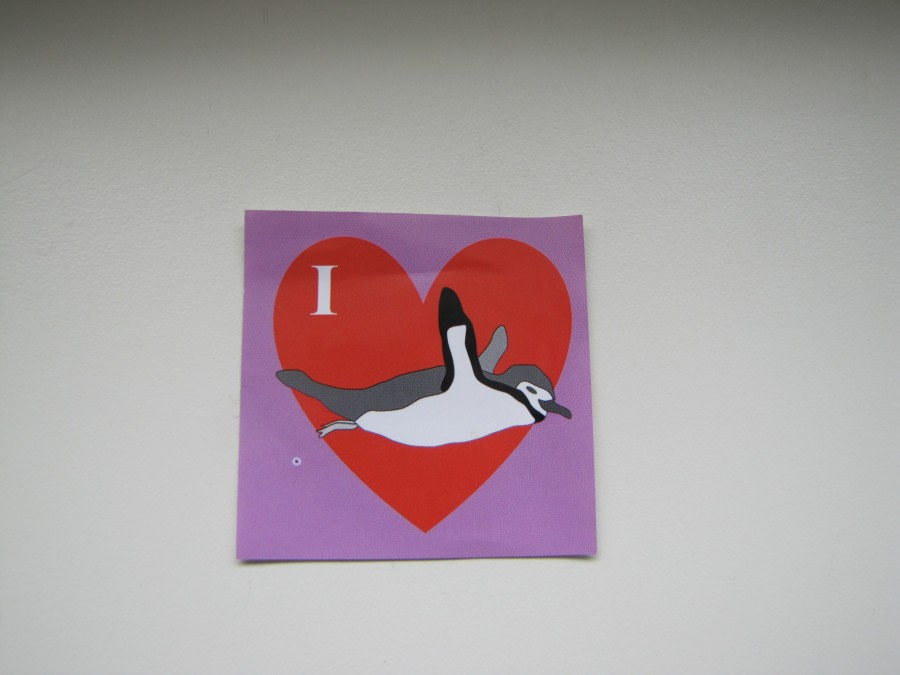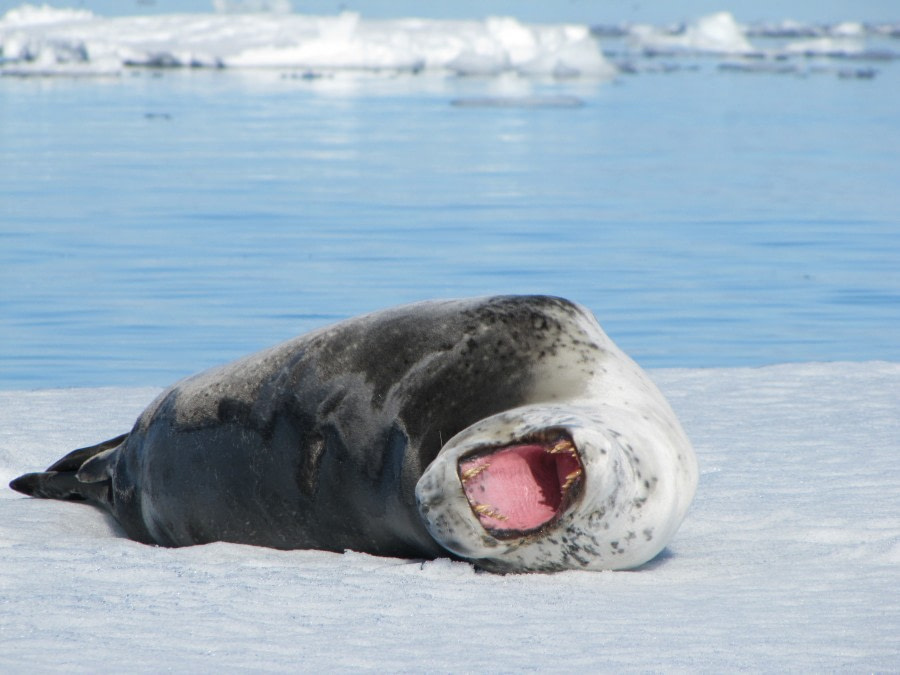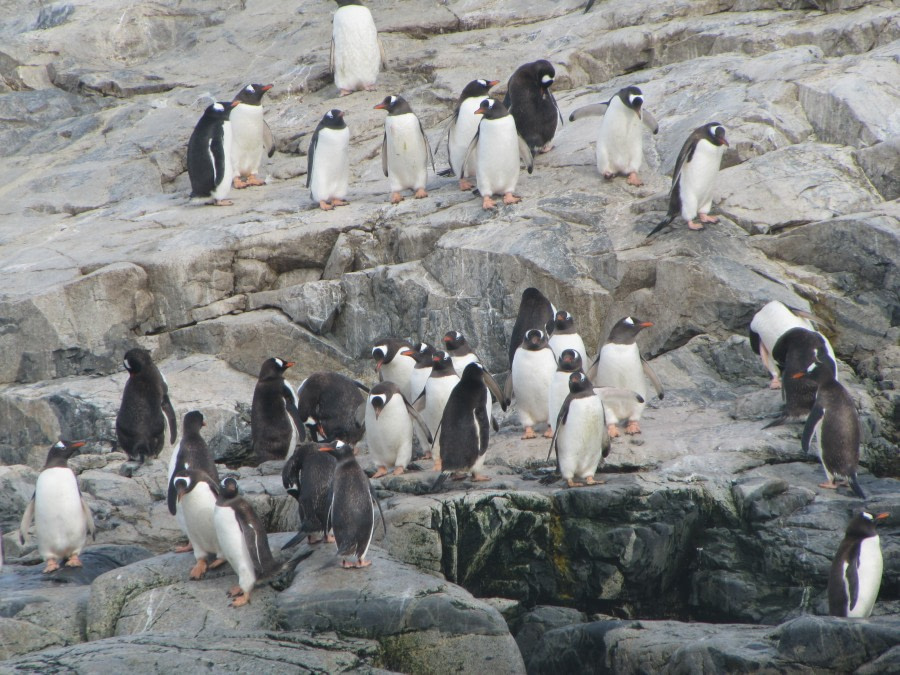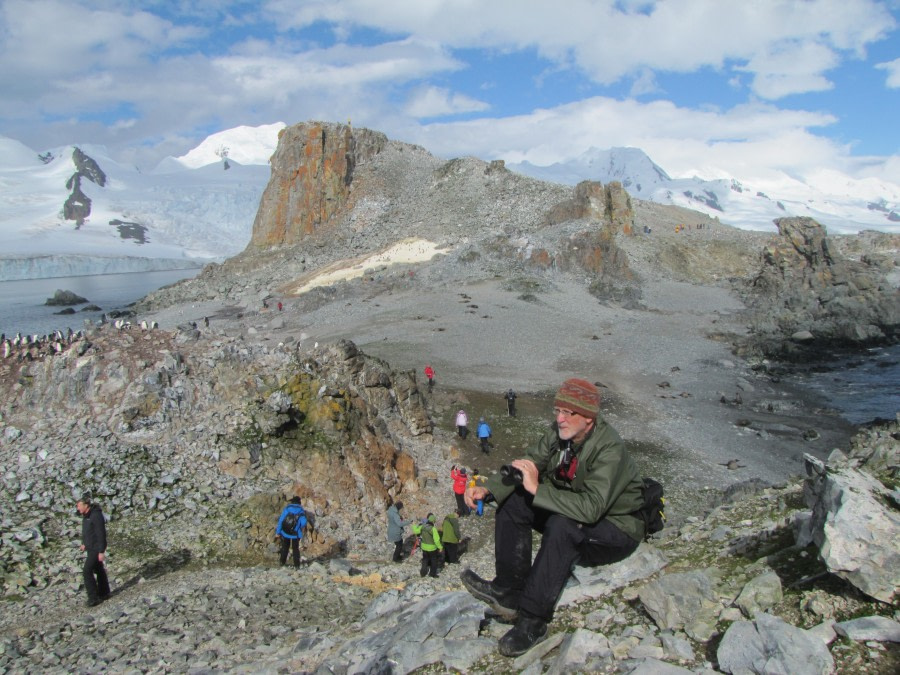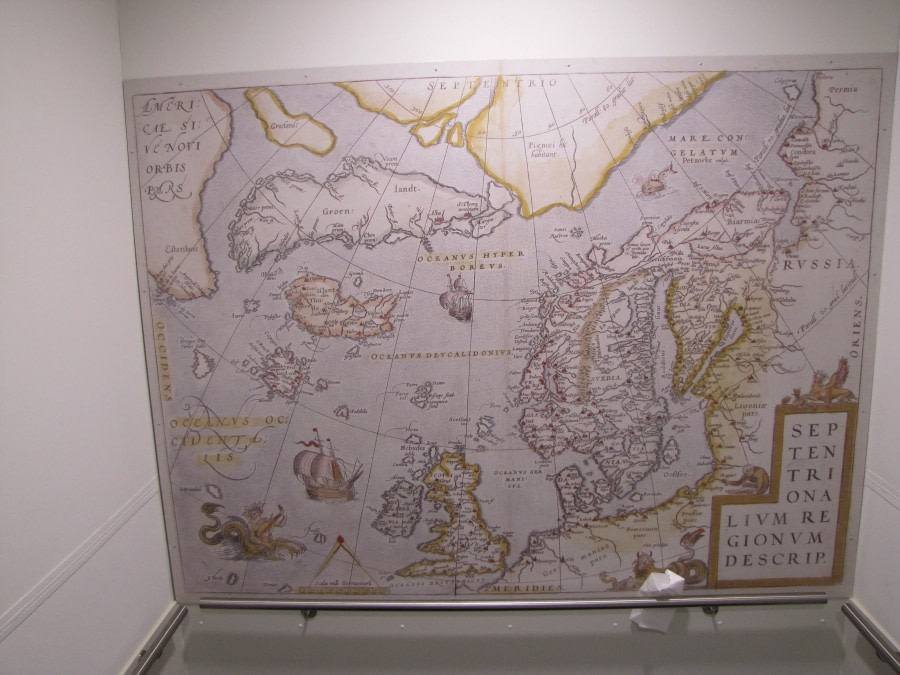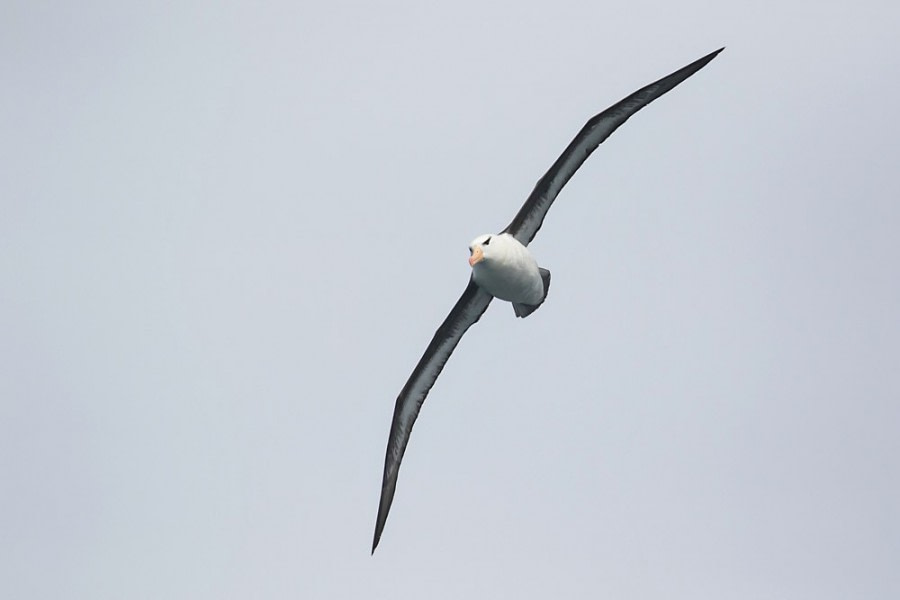| Datum: | 02.02.2018 |
| Position: | 54°49'S, 068°17'W |
| Wind: | N 2 |
| Lufttemperatur: | +15 |
Die Einschiffung auf die Ortelius begann gegen 16 Uhr, und wir wurden bald von unserem Hotelmanager und seinem Assistenten (DJ und Sava) empfangen. Wir bekamen unsere Kabinen gezeigt und hatten etwas Zeit, um auszupacken und uns einzurichten. Es ist schön zu wissen, dass wir unser 'Hotel' nicht mehr wechseln müssen, bis wir wieder in Ushuaia sind. Wir begannen bald, unser neues Zuhause zu erkunden; der vielleicht wichtigste Ort war die Bar auf Deck 6, wo man rund um die Uhr Kaffee/Tee bekommt und wo Barmann Rolando oft anzutreffen ist, wenn man Lust auf etwas Stärkeres hat. Natürlich war es auch wichtig, die Türen zu den Außendecks zu finden, damit wir, wenn Albatrosse, Wale und andere Leckerbissen angekündigt werden, wissen, wie wir so schnell und effizient wie möglich dorthin gelangen können. Um 17:10 Uhr wurden wir von Expeditionsleiterin Cheryl zu einer obligatorischen Besprechung im Vortragsraum auf Deck 3 gerufen. Sie begrüßte uns an Bord und stellte den Dritten Offizier Warren vor, der eine wichtige Sicherheitseinweisung und einen Rettungsboot-Drill gab. Jetzt wissen wir, was wir tun müssen, wenn wir ein Feuer oder einen Mann über Bord sehen, und wir wissen genau, was wir zu packen haben und wohin wir gehen müssen, wenn der Generalalarm des Schiffes ausgelöst wird. Mit sieben kurzen und einem langen Tonsignal werden wir (warm angezogen) in die Bar gerufen, die gleichzeitig als Appellplatz dient. Sobald wir alle dort sind, werden wir über den Funkverkehr zwischen den Brückenoffizieren und der Schiffsbesatzung über die Entwicklungen auf dem Laufenden gehalten. Das Signal zum Verlassen des Schiffes ist ein mündlicher Befehl des Kapitäns oder des Ersten Offiziers, und wir hoffen, dass wir es heute zum einzigen Mal hören, gefolgt von den beruhigenden Worten "nur zur Übung"... Die Übung ist beendet, wenn wir uns in geordneter Weise draußen neben den Rettungsbooten versammeln; danach steht es uns frei, die Erkundung des Schiffes fortzusetzen oder mit unseren Kameras an Deck zu gehen, um das Auslaufen der Ortelius aus Ushuaia und die Fahrt durch den Beagle-Kanal zu genießen. Vor dem Abendessen versammelten wir uns erneut in der Lounge/Bar auf Deck 6, um die wichtigsten Besatzungsmitglieder kennenzulernen und etwas über den Schiffsablauf während unserer Reise zu erfahren. Hotelmanager DJ vermittelte uns nützliche Informationen über die Essenszeiten, den Internet-/Webmail-Zugang und den korrekten Umgang mit den Toiletten. Ihm folgte Expeditionsleiterin Cheryl, die Kapitän Ernesto vorstellte - die Person, die uns sicher hin- und zurückbringen wird - und dann an ihr Team von Mitarbeitern zur Selbstvorstellung weitergab. Wir stießen mit einem Glas Sekt (oder Orangensaft) auf den Erfolg unserer Reise an, und dann war es Zeit für unser erstes Abendessen an Bord. Nach dem Essen stand Dr. Veronique im Schiffskrankenhaus bereit, um Medikamente gegen Seekrankheit zu verteilen und wertvolle Ratschläge zu geben. Ein Spaziergang an Deck, um die Buckelwale beim Flossenwinken und die einheimische Vogelwelt beim Fliegen zu beobachten, eine Tasse Tee oder etwas Stärkeres, und dann fielen die meisten von uns nach einem anstrengenden und aufregenden Tag ins Bett, in der Hoffnung auf ruhige See, die uns in den Schlaf wiegt. Morgen früh werden wir uns auf den Weg zu unserem ersten Ziel machen - den Falklandinseln.
